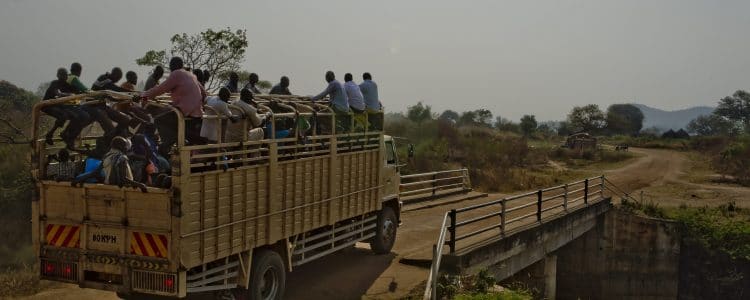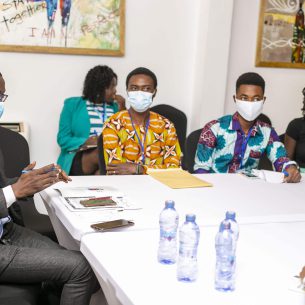
Pick up any newspaper or switch on any TV in Europe over the past five years and you might think that the entire population of Africa is on the move – and heading across the Mediterranean. Images of young men travelling in boats in search of protection and a better life for themselves and their families have become a staple part of the media diet, with the so-called ‘migration crisis’ dominating political debates within the European Union and beyond. The use of development assistance to leverage co-operation and compliance from African countries in limiting migration flows has, in turn, become an increasingly important focus of policy efforts.
But these representations and the policies with which they have come to be associated reflect long-standing biases in how we think about migration in the African context.
Here’s the reality. Empirical research by Flahaux and de Haas published in 2016 shows that African migration is first and foremost intra-continental. In 2000, 75% of all African migrants lived in another African country, while 16% were in Europe, 5% in America, 4% in Oceania and 0.3% in Asia. Whilst the numbers living in Europe and the United States have increased over recent years, African migrants still overwhelmingly migrate within Africa. Research published recently by the European Commission supports this conclusion, also pointing to the significant number of refugees and international migrants, mainly from Europe and Asia, hosted by African countries.
Migration within Africa has significant developmental benefits with implications for the delivery of the Sustainable Development Goals (SDGs). Such benefits are most notably through the reduction of poverty (SDG1) and income inequalities (SDG10) by opening up opportunities for decent work (SDG8), and through disrupting inequalities associated with unequal social structures, including those based on gender (SDG5) and age. Migration can contribute to positive development outcomes. For example, migrants and their families may benefit from increased income, skills and capacities, allowing them to spend more on basic needs, access education and health services, make investments, and reduce inequalities.
The African Union (AU), for one, has long recognised these benefits. In its first Migration Policy Framework for Africa published more than ten years ago, the AU notes the potential for well-managed migration to yield significant developmental benefits. The framework cites the role played by labour migration in filling labour needs in agriculture, construction and other sectors in countries of destination, and the beneficial effects of remittances, knowledge and skills transfers to the economies of countries of origin. The Revised Migration Policy Framework and Plan of Actionpublished earlier this year explicitly engages migrants and diaspora in development processes for the first time and formally establishes the principle of free movement as an objective towards which countries will work at the intra- and inter-regional levels.
But the developmental potential of migration is neither straightforward nor inevitable. Migration is a highly visible reflection of global inequalities whether in terms of wages, labour market opportunities, or lifestyles. It can both create new inequalities and exacerbate existing ones. Not everyone has equal access to the benefits of migration: migration often reflects and reinforces existing spatial, structural and social inequalities including those related to gender, age and income. Inequalities can also result from increased barriers to migration, irregular and precarious migration, poor labour conditions, and a lack of rights for migrants and their families. Indeed, income inequalities overall in countries of origin can be expected to increase with international migration. This is because the poorest of the poor seldom have the means to migrate. And those who migrate face unequal access to rights and social resources, including the right to seek protection in cases of those fleeing conflict, violence and persecution.
Ensuring that migration contributes to Africa’s development and the delivery of the SDGs – at the individual, household, community and national levels – requires at least three key things to happen.
First, better understanding and data are needed on the relationships between migration, inequality and development, not only in the context of Africa where migration between countries is so significant but also in relation to South-South migration more generally. Although South-South migration accounts for nearly half of all international migration (almost 70% in places), South-North migration to developed countries has disproportionately dominated research and policy debates, reflecting the political and policy interests of the Global North and the relative lack of research capacity in the Global South. The AU’s plans to establish an African Observatory for Migration and Development in Rabat may go some way to filling the research and data gaps but only if the orientation remains towards the needs of Africa rather than Europe. What’s also necessary is financial support to develop research skills and expertise at the local level.
Second, migration research and policy analysis need to be embedded in a deeper understanding of development processes. Whilst the 2030 Agenda on Sustainable Development explicitly incorporates migration into global development frameworks and processes for the first time, both inequality and migration continue to play subordinate roles in development policy and programming. Whilst SDGs 5 and 10 signal a commitment to reducing specific aspects of inequality, recognition is limited of how gender, age and income inequalities can undermine or contribute to the delivery of the 2030 Agenda more generally. And whilst migration affects the delivery of most goals across the 2030 Agenda, mentions are few of its implications for the delivery of the SDGs beyond SDG10.7 (migration management). One of the consequences of this approach is that the mainstreaming of migration in development policy, or of development in migration policies, has not been consistent nor widespread. This needs to change. Policy makers need to take greater account of the ways in which migration influences specific sectors – labour market, agriculture, education, investment and financial services, and social protection and health – and, in turn, how sectoral policies affect migration.
Finally, we need to embed migrant rights and issues of equality in the analysis of the relationship between migration and development. Whilst the lower costs of (most) South-South migration increase its poverty reduction potential, structural factors locking Global South countries into unequal economic and power relations and a lack of rights for vulnerable migrants may increase local, regional or global inequalities. Moreover, an absence of opportunities for decent work, social protection and security can mean people lack migration alternatives even where the benefits to themselves, their families and the wider community are unclear. Indeed, few countries in the Global South have explicit policies on migrant integration, undermining the economic and social contribution of migrants. A rights-based approach to migration and development in Africa will ultimately reduce the possibility that migration will exacerbate existing inequalities – or create new ones.








